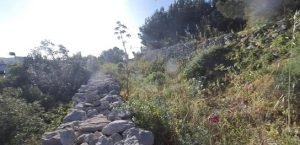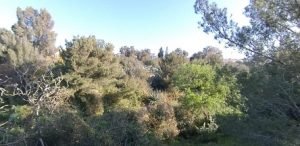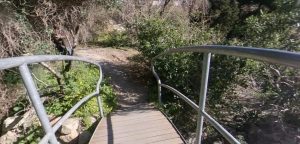
WELCOME!
to
Wied Għollieqa
Nature Reserve

Wied Għollieqa is a small valley located in the north east of Malta next to the University of Malta. It was saved from urban development in the 1980s by local environmental NGOs, local residents and students and an afforestation program was initiated by Nature Trust Malta to rewild the valley.
 Much of the valley is now a protected area populated with a large number of trees including the largest population of the endangered national tree in Malta, the Sandarac Gum Tree (‘Siġra tal-Għargħar’ – Tetraclinis articulata).
Much of the valley is now a protected area populated with a large number of trees including the largest population of the endangered national tree in Malta, the Sandarac Gum Tree (‘Siġra tal-Għargħar’ – Tetraclinis articulata).
It provides a vital refuge and nesting area for avifauna like the Sardinian Warbler (‘Bufula Sewda’ – Sylvia melanocephala), Cetti’s Warbler (Bufula tal-Għollieqa, Cettia cetti), Common Swift (‘Rundun’ – Apus apus) as well as mammals like the rare Least Weasel (‘Ballottra’ – Mustela Nivalis).
Archaeological remains have been discovered in the valley including pottery vessels from the first phase of the Bronze Age, a tomb dated to 50AD containing cremation urns, pottery flasks, jars, saucers, lamps, two female skeletons and one male skeleton, a tower, a cistern and cart ruts.
cremation urns, pottery flasks, jars, saucers, lamps, two female skeletons and one male skeleton, a tower, a cistern and cart ruts.
The site is designated as a Bird Sanctuary, Level 2 Area of Ecological Importance (AEI), Level 1 Site of Scientific Importance, Tree Protection Area and a Special Area of Conservation (SAC).
The nature reserve is managed by Nature Trust Malta with the help of funding from the Environment and Resources Authority (ERA) in accordance to a detailed restoration plan written by ecologist Dr Eman Calleja.
Ecology
 Biologically, Wied Għollieqa is important for a number of species that live in the area, such as the weasel (Mustela nivalis) which is very rare and reported to live in Wied Għollieqa. Other species include a number of fungi that are rare on a local scale or also on a European scale, such as Inonotus indicus which has been recorded for the first time in Europe from Wied Għollieqa itself.
Biologically, Wied Għollieqa is important for a number of species that live in the area, such as the weasel (Mustela nivalis) which is very rare and reported to live in Wied Għollieqa. Other species include a number of fungi that are rare on a local scale or also on a European scale, such as Inonotus indicus which has been recorded for the first time in Europe from Wied Għollieqa itself.
Following reforestation, Wied Għollieqa also houses the largest population in the Maltese Islands of the national tree, the sandarac gum tree (Tetraclinis articulata) giving the area a very high conservation value due to the rarity of the tree.
The site is also important since a number of trees protected within the Trees Directive are present in the area and a number of protected birds also use the valley as nesting grounds.